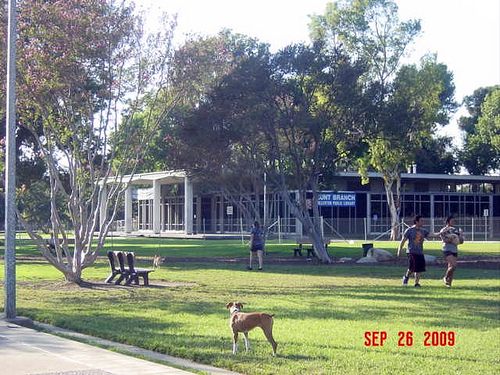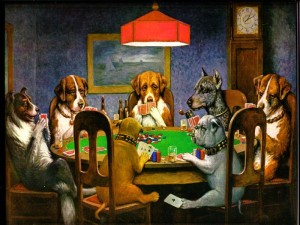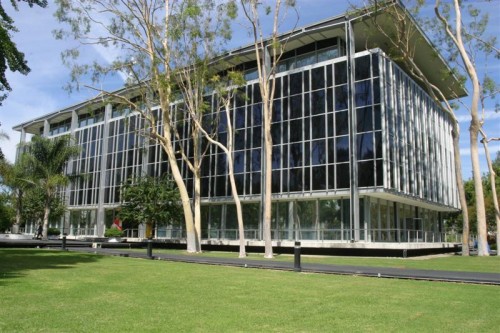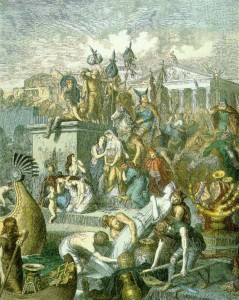We received an e-mail the other day from a Friend calling herself “Lady Artist.” It was a good letter and it made some excellent points so we agreed to publish it.

The City of Fullerton has proven to be a faithless custodian of a modern architectural gem. I have come to the conclusion that the best fate of the building that has come to be known as the Hunt Branch Library is to give it back to the Norton Simon Foundation or, at least to someone who will appreciate it.
William Pereira designed this building in concert with a larger, integrated development; a site plan that included the Hunt Administration Building and coordinated landscape that included a reflecting pool and “floating” concrete slabs and steps. Over the years the property has been partitioned by a fence, the reflecting pool filled in by its new owners, with new and comically bad architecture burdening the site. Perhaps most insulting of all, the City has put a “bark park” on the grounds next to the library.
A bark park. Great for dogs, insulting for a work of art. Unless by art you mean a group of dogs playing poker.

I believe that almost anybody would be a more reliable guardian of this building than the City has shown itself to be. The homeless people who camp out under the extended roof seem to appreciate it more than the City does.
I also believe the present location for a branch library couldn’t be worse. It is not well known, and frankly, I question the number of users claimed by the Library itself in its annual counts. Why continue to fund a branch library at this near-hidden location when neither north nor east Fullerton have branch libraries at all; not to mention that the existence of the Hunt Branch would probably come as a complete surprise to most west Fullerton denizens? But these are separate issues in themselves, and I digress.
For years I’ve heard all this weeping and wailing about how Fullerton could have had the Norton Simon Museum. Why mourn that? Fullerton doesn’t deserve it. Never did. The inescapable evidence is on display at the Hunt Branch every day of the year.
Let’s give it back to Norton Simon, with our thanks; and our apologies for not recognizing the architectural legacy that he gave us.
Thank you, Lady Artist, for a thought-provoking piece.



 At one point, the Hunt Library was part of the campus of Hunt Foods, owned by an entrepreneur and industrialist Norton Simon. In 1927, he and his family purchased an old orange juice bottling company in Fullerton. Over the years, they added more produce and vegetables and most notably proceeded to turn tomato sauce and ketchup into gold.
At one point, the Hunt Library was part of the campus of Hunt Foods, owned by an entrepreneur and industrialist Norton Simon. In 1927, he and his family purchased an old orange juice bottling company in Fullerton. Over the years, they added more produce and vegetables and most notably proceeded to turn tomato sauce and ketchup into gold.